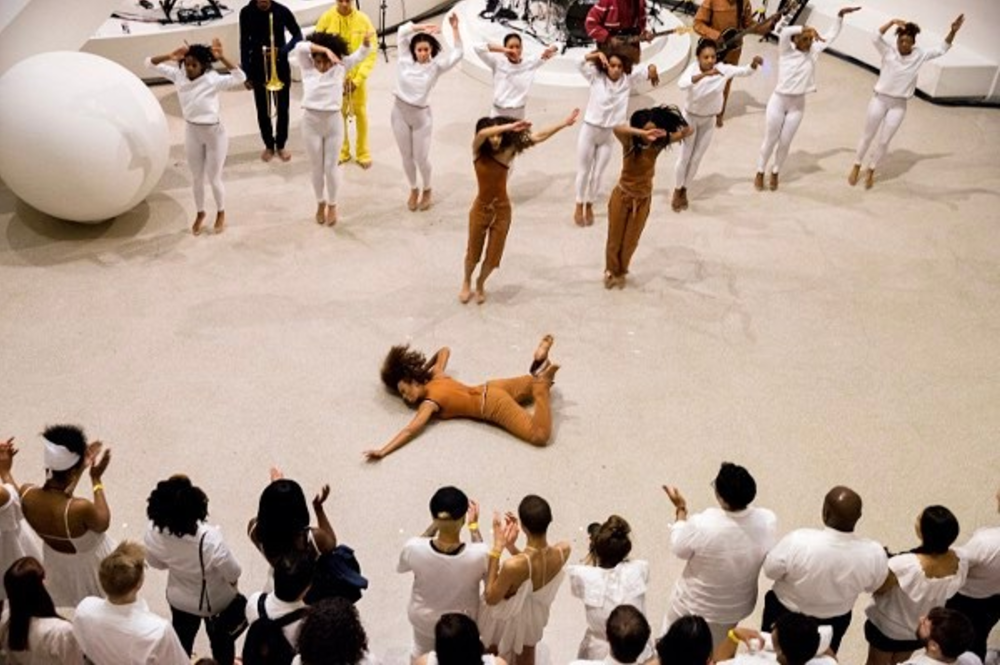
From Joseph Beuys cozying up with coyotes to Amalia Ulman pulling a Kardashian-grade Instagram takeover, “performance art” seems to only be limited by what its audience is willing to designate as such. Outside the conventional art world, the mantle of performance has been taken up by the famous (Solange’s much heralded Guggenheim takeover) and the infamous (the lawyer of alt-right misinformation king and Infowars founder Alex Jones attempting to offload his client’s on-air hate speech as an elaborate performance piece).
So how can you separate out the genuine from the inauthentic, and why does performance continue to straddle these boundaries? Is it the synchrony between our increasingly accelerated lifestyles and the ephemeral, reactive nature of performance art? Is it because the medium is particularly well-suited to the protest movements, urgency, and ambiguity framing our global politics? And how have new media and post-internet aesthetics redefined the look, feel, and political potential of performance art in the 21st century?
Answering these myriad questions means tracing the history of performance. Beginning with the so-called “performative turn” of the 1960s, which built up the medium’s (literal) street cred as a boundary-defying movement that would radically redefine the future of art in the second half of the 20th century, we track the evolution of performance and speculate on the reasons behind its impact today.
The Grandparents of Modern Performance


It’s safe to say that after the ’60s, performance art was never the same. Trumpeting political freedom and economic opportunity, post-war America emerged as the world’s major hub for all things avant-garde. Europe’s budding art stars—from Eva Hesse to Claes Oldenburg—poured into New York City to take part in this cultural explosion. Meanwhile, the bohemian rock-n-roll flair ushered in by the likes of the Velvet Underground fused with the experimental performances of Pop Art darlings like Andy Warhol and his Exploding Plastic Inevitable events to create an unprecedented public hunger for happenings that washed over the streets of New York.
Most importantly, the “performative turn” of the ’60s emerged from a distinct moment of political and cultural upheaval across America. From the emergent civil rights movement and race riots that ripped through its cities, to the blossoming of sociology with Jane Jacobs’s Death and Life of Great American Cities (1961), to seismic political events like the assassination of John F. Kennedy in 1963, America in the 1960s exposed the hypocrisy and weakness in the government’s handling of both global and domestic affairs.
SOURCE:
https://www.artsy.net/article/artsy-editorial-performance-art(accessed 22.8.17)
No comments:
Post a Comment